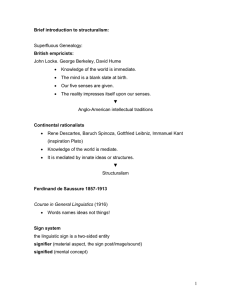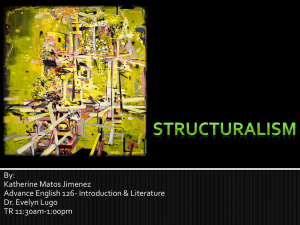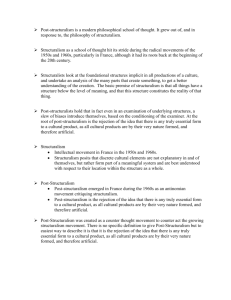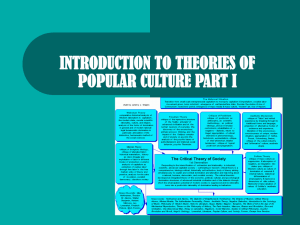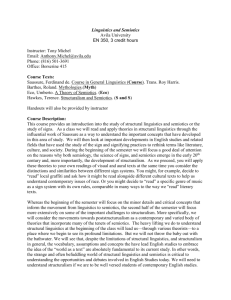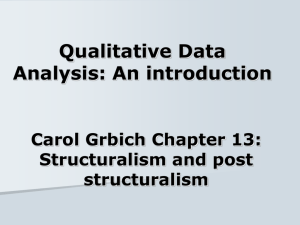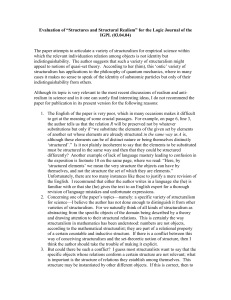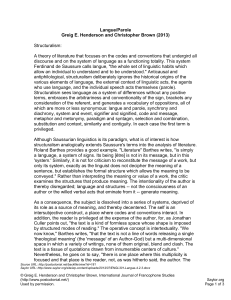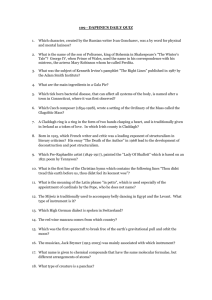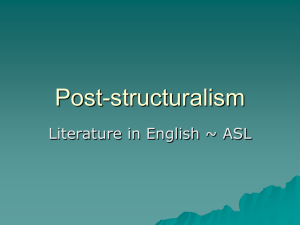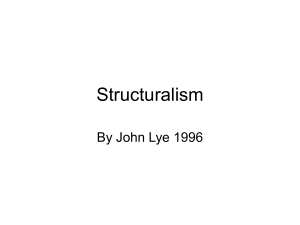PowerPoint Slides for Lectures
advertisement
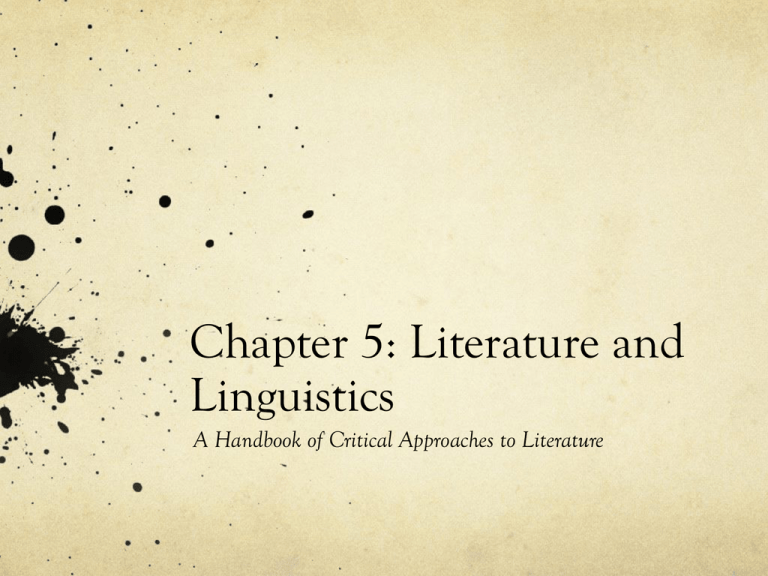
Chapter 5: Literature and Linguistics A Handbook of Critical Approaches to Literature Chapter 5: Literature and Linguistics I. Structuralism and Post-structuralism, Including Deconstruction A. Structuralism: Contexts and Definitions Structuralists identify structures, systems of relationships, which endow signs (words) with meanings B. The Linguistic Model Saussurean linguistics: la langue, la parole, semiotics, syntagmatic reading; Jakobson, communicative functions Chapter 5 C. Russian Formalism: Extending Saussure Moscow scholars after World War I: Propp (folktales), Shklovsky (poetry as defamiliarization); narrative = story + plot D. Structuralism, Lévi-Strauss, and Semiotics Structural anthropology: all societies have complex structures; paradigmatic approach to “deep structures” of culture and myth Chapter 5 E. French Structuralism: Coding and Decoding French structuralists Barthes, Derrida, Foucault, Todorov all used Saussure to read complex texts (Proust, Balzac) Narrative analogous to sentence—syntagmatic reading; cf Russian Formalists on story and plot (histoire and discours) Text is message to be understood by a code; Barthes’s codes: actions (proairetic), puzzles (hermeneutic), cultural, connotative, symbolic F. British and American Interpreters Culler: seeks to expand the poetics of structuralism Chapter 5 G. Post-Structuralism, Deconstruction Influenced by Barthes’s structuralism texts subversively undermine their meaning just as language is constant free play and deferred meaning, with broad referentiality Derrida: difference, philosophical skepticism; meaning reveals contradictory structures within Chapter 5 II. Dialogics Bakhtin’s dialogics expresses the inherent addressivity of all language especially as it appears in the polyphonic novel Carnivalization Marxist and Christian influences Role of the grotesque A subject is not an object of address but a dialogic partner; heteroglossia Mae Gwendolyn Henderson

